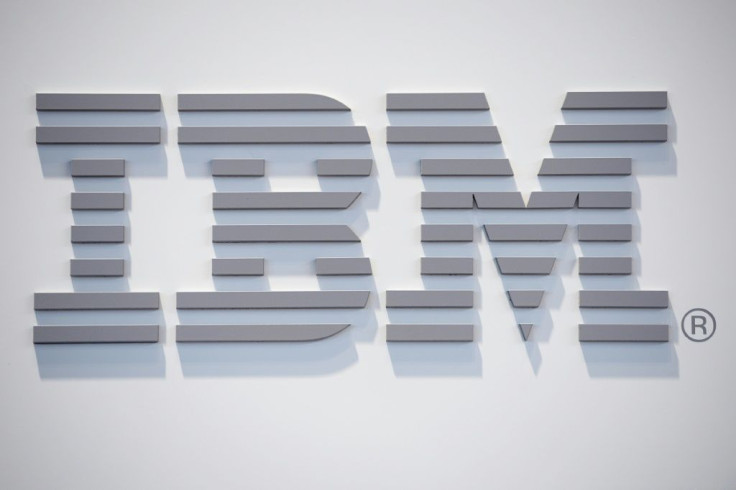IBM Is Catching Up With Microsoft And Apple On Wall Street—Is The Comeback For Real?

IBM is catching up after years of lagging far behind Microsoft and Apple on Wall Street. Over the last six months, Big Blue's shares have gained 24.65%, compared to 16.65% for Microsoft and 0.89% for Apple.
The tech giant's comeback on Wall Street may be for real this time around, as its management is beginning to get its business and investment strategy right. It allocates other people's capital into growing businesses that deliver superior market returns.
After years of decline, IBM's Economic Value Added (EVA), a measure of Economic Profit, the value a company generates more than the cost of capital, has been rising.
According to Gurufocus.com, IBM's EVA, calculated as the difference between the Return on Invested Capital (ROIC) and the Weighted Average Cost of Capital (WACC), has recently risen from around zero percent in 2017 to around 10 percent.
The significant improvement can be attributed to the legendary corporation's years of "creative restriction." It included abandoning traditional declining business segments and replacing them with new fast-growing businesses, like the cloud and AI.
For instance, in 2018, IBM paid $33 billion for Red Hat, an open-source software solutions provider. This acquisition helped Big Blue venture into fast-growing segments of the IT industry, such as "hybrid" multi-cloud. A hybrid multi-cloud is a computing environment that aggregates multiple cloud providers and clouds—public, private and software-as-a-service.
"IBM's strategic realignment, which includes moving away from some of their antiquated business areas, has shifted focus to more technology-driven fields, particularly in AI software," Mayuranki De, Research Analyst, Global X, told the International Business Times.
"Their [IBM] shift towards a platform-centric hybrid cloud strategy has been significantly reinforced by the integration of Red Hat OpenShift, which facilitates the management and deployment of applications across diverse computing environments," De added.
The success of IBM's turnaround is confirmed by a string of recent financial reports, including one for the fourth quarter released this week. It showed that Big Blue revenues are growing, with gross, operating, and net profit margins rising again. GAAP gross profit margin came in at 59.1%, up 1.4 points; Operating margin (non-GAAP) was 60.1%, up 1.4 points; and GAAP pre-tax net income margin touched 21.6%, up 1.8 points.
"In the fourth quarter, we grew revenue in all of our segments, driven by continued adoption of our hybrid cloud and AI offerings. Client demand for AI is accelerating and our book of business for watsonx and generative AI roughly doubled from the third to the fourth quarter," said Arvind Krishna, IBM Chairman and Chief Executive Officer.
"For the year, revenue growth was in line with our expectations, and we exceeded our free cash flow objective. Based on the strength of our portfolio and demonstrated track record of innovation, for 2024 we expect revenue performance in line with our mid-single digit model and about $12 billion in free cash flow," Krishna added.
De provides further insight into Big Blue's fourth-quarter financial report and strategic shift: "A notable edge for IBM is its consulting arm in AI, which, coupled with its increasingly relevant AI software solutions, such as watsonx AI, positions it favorably against competitors— especially in highly regulated industries," he said.
Meanwhile, the company's strategy of acquiring AI-related businesses has been quite methodical, aimed at enhancing their generative AI capabilities.
"This approach aligns well with the company's recent report of a substantial increase in demand for generative AI offerings, highlighted by a fivefold rise in use cases and pilots," De added. "It's still early for AI in IBM's portfolio, but we'll likely see a more substantial impact on their revenues from these ventures soon."
Ryuta Makino, Technology Research Analyst for Global X, thinks IBM's improved fundamentals are real, but he would like to see more robust growth in the software segment.
"We believe that RedHat growth of 7% cc is mediocre and would like to see stronger growth in hybrid cloud offerings," he said. "We believe that IBM's best business right now is consulting, which will be the early beneficiary of AI for IBM, and IBM in 2023 has notably outperformed competitors such as Accenture and Infosys here."
Jonathan Ernest, an economics professor at Case Western Reserve University, liked what he saw in IBM's recent financial report. Nonetheless, he expressed some skepticism about the future.
"Whether the upswing will last may depend largely on whether IBM can increase and maintain its position as a leader in the AI space, but also on whether the use-case for AI can continue to be expanded to warrant an increased demand for the types of products and services IBM offers," he said.
Disclosure: The author owns shares of IBM, Apple, and Microsoft
© Copyright IBTimes 2024. All rights reserved.






















